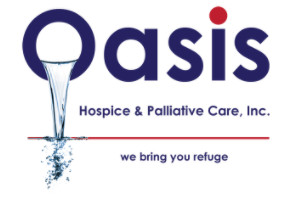Many Americans die in institutions such as hospitals or nursing homes, where their wishes are not respected. To avoid this, older people should be aware of their end-of-life care choices and communicate their wishes to their caregivers ahead of time. If an elderly person expresses a desire to die at home, receiving end-of-life care for pain and other symptoms, and informs healthcare providers and relatives, he or she is less likely to die in a hospital receiving unnecessary treatments.
When it comes to end-of-life care, caregivers must weigh many factors, including the elderly person’s ability to try life-prolonging or curative therapies, how much time he or she has left to live, and the desired environment for care.
Knowing Palliative Care & its Benefits
Doctors will treat chronically ill patients for as long as possible in the hopes of curing them. Along with curative treatment, these patients may receive medical care for their symptoms, also known as palliative care.
Anyone dealing with a severe illness, such as heart failure, chronic obstructive pulmonary disease, cancer, dementia, Parkinson’s disease, and other conditions, will benefit from palliative care. Palliative care may be beneficial at any level of illness, but it is best started as soon as a diagnosis is made.
Palliative care may help patients understand their medical treatment options, in addition to improving their quality of life and alleviating symptoms. Palliative care’s structured programs can be beneficial to any older person who is experiencing a lot of general pain and impairment late in life. Palliative care is not dependent on the prognosis and can be provided alongside curative treatment.
A palliative care consulting team is a multidisciplinary team that provides medical, psychological, emotional, and practical support to the patient, family, and other doctors. Palliative care specialists and nurses make up the staff, which also includes social workers, nutritionists, and chaplains.
Palliative care can be delivered in a variety of settings, including hospitals, nursing homes, outpatient palliative care facilities, and other specialist clinics, as well as at home. Palliative care can be covered by Medicare, Medicaid, and insurance plans. The Department of Veterans Affairs may be able to provide veterans with palliative care. Some programs can be covered by private health insurance. Providers of health insurance will respond to inquiries about what they would cover. Check to see if your insurance policy will cover your condition.
You don’t have to give up medication that might cure a chronic condition if you receive palliative care. Palliative care should be provided in conjunction with curative treatment and can begin as soon as the patient is diagnosed. If the doctor or palliative care team decides that continuing therapy is no longer effective over time, there are two options. If the doctor believes the patient will die within 6 months, palliative care will transfer to hospice care (see What does the hospice 6-month requirement mean?). Alternatively, the palliative care team may continue to assist with a greater focus on comfort care.
So what is Hospice Care? – Understanding Hospice
At the end of life, more and more people are opting for hospice care. Hospice care can be delivered in a variety of settings, including the patient’s residence, a nursing home, an assisted living facility, or an inpatient hospital.
It is likely that a chronic condition will not be cured at any stage, or that a patient will refuse to undergo such procedures. Hospice was created specifically for people in this situation. When a patient enters hospice care, he or she recognizes that medical efforts to cure or slow the disease’s progression have failed.
Hospice, like palliative care, offers intensive comfort care as well as family support, although it does not aim to cure the patient’s disease. Hospice is for people who have a terminal disease and are told by their doctor that they have 6 months or less to live if the illness is allowed to run its course.
Hospice is a form of treatment that is not limited to a particular location. It can be provided in two ways: at home or in a facility like a nursing home, hospital, or even a separate hospice center.
Hospice treatment assembles a team of specialists, including nurses, physicians, social workers, spiritual counselors, and qualified volunteers. All works together to provide medical, emotional, and spiritual support to the individual who is dying, the caregiver, and/or the family.
A member of the hospice team pays frequent visits, and someone is available by phone 24 hours a day, seven days a week. Medicare and other insurance providers can provide hospice care; check to see if your specific condition is covered.
Special Note About Hospice Care – Oasis Hospice & Palliative Care of Chicago
Despite the fact that hospice offers a lot of help, a person dying at home is cared for on a daily basis by family and friends. When patients need a rest, the hospice team trains them on how to care for the dying person and also offers respite care. The duration of respite care can range from a few hours to several weeks.
Families of people who received hospice care are happier about their end-of-life care than families of people who did not receive hospice care. In addition, relative to those who do not receive hospice treatment, hospice patients are more likely to have their pain monitored and are less likely to undergo tests or be given medications they do not need.
For more information about hospice or palliative care, please visit Oasis Hospice and schedule a free consultation with a specialist today!

